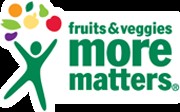By Heather Criss
There are an abundance of articles on how eating a balanced diet with a wide variety of fruits and vegetables is fundamental to maintaining your health. Most people know and understand that this is true. The Centers for Disease Control (CDC) released their National Health and Nutrition Examination Survey and the results are distressing; there is still an increase in the rates of obesity in children. This trend has been occurring for decades. Billions of dollars are spent every year on studies and programs aimed at reversing this trend.
Why is it so important to stop this trend? Obesity isn't a cosmetic issue; it has a strong correlation in being diagnosed with chronic diseases that impact your quality of life. Diabetes, heart disease, sleep apnea, joint problems, and many other diagnoses have much higher rates when someone is obese. There is a rise in medical claims for younger and younger people for these diagnoses that have been traditionally associated with older adults.
Why is this still an issue if everyone knows that vegetables are good for you and junk food is ‘bad’? There are many factors that come into play to keep these preventable issues from being resolved. Social norms, culture, finances, traditions, preference, environmental factors, and convenience are some of the most powerful forces working against reversing this epidemic.
The environment in which people live has one of the greatest impacts on your health. (Check out Why Your Zip Code Matters More Than Your Genetic Code, The National Center for Biotechnology Information.) Being in proximity to and being able to afford food play a significant role in consuming fresh produce. When looking at meal options for your family in the grocery store, the commonly held belief is that healthy food is more expensive than the food that is processed and convenient. If you run down to a corner store because the large full service grocery store is too far away, most of the time you will see that there are some cheap, quick, and processed options; the produce options are not always the freshest or affordable. The temptation to buy what is the best deal to feed your family based on portion size and acceptability to your family is overwhelming, and sometimes a financial necessity.
There are so many produce options available all year round than there has ever been. This may seem to be the antithesis of the previous remarks on availability, but not being familiar with different types of produce for any reason can create a barrier to purchasing. Having the time, money, and energy to explore new food options that incorporate more fresh produce can be daunting. Knowing how to prepare fresh produce is essential to enjoying the taste, so we often prepare things we are familiar with and don’t explore the variety that is available. This can be especially true when there are picky eaters at the table.
There is a long road ahead for making the healthy choice the easy choice. The good news is that the movement in the field of prevention has been toward affecting the Policy, System, and Environmental (PSE) changes that create an environment that supports the healthy choice being the easy choice. This approach helps to create an environment that accommodates those trying to improve their health and their family’s health. When the community is in support of the small changes there is a greater chance of healthy outcomes for a larger percent of the population.
Some of the efforts in Mendocino County by a collaboration of agencies have been to address the access of fresh produce and the familiarity of new varieties of produce. Some of the ways our community has been addressing the ability to access fresh produce and overcome the barriers to affording fresh produce have been in promoting the use of community gardens, Electronic Benefit Transfer (EBT) cards, and the Market Match at the Farmer’s Market. Signing up for CalFresh, WIC, and the Food Bank for qualifying individuals is also helpful for those in need. There has been a lot of work around the county to provide Harvest of the Month taste tests in schools, grocery stores and medical clinics to increase the familiarity of a variety of fresh produce options that are in season. There are also free nutrition classes available in many locations around the county.
The work continues and approaches are changing and adapting to the needs of the community. It is clear that the support of the community as a whole is going to be essential in changing the swing of the pendulum of obesity. If you would like to see what is happening and meet the partner agencies that are working on creating change, please check out the Childhood Obesity and Family Wellness Action Team on the Healthy Mendocino website under Action Teams.
###
Heather Criss works at the Prevention Unit at Mendocino County HHSA Public Health. She administrates grants focusing on Obesity Prevention and Active Transportation and facilitates the County Nutrition Action Partners (CNAP), also known as the Food For All Mendocino Collaboration Team. She is a member of the Community Health Improvement Plan (CHIP) Childhood Obesity and Family Wellness Action Team, and a member of the Mendocino County Food Policy Council.

